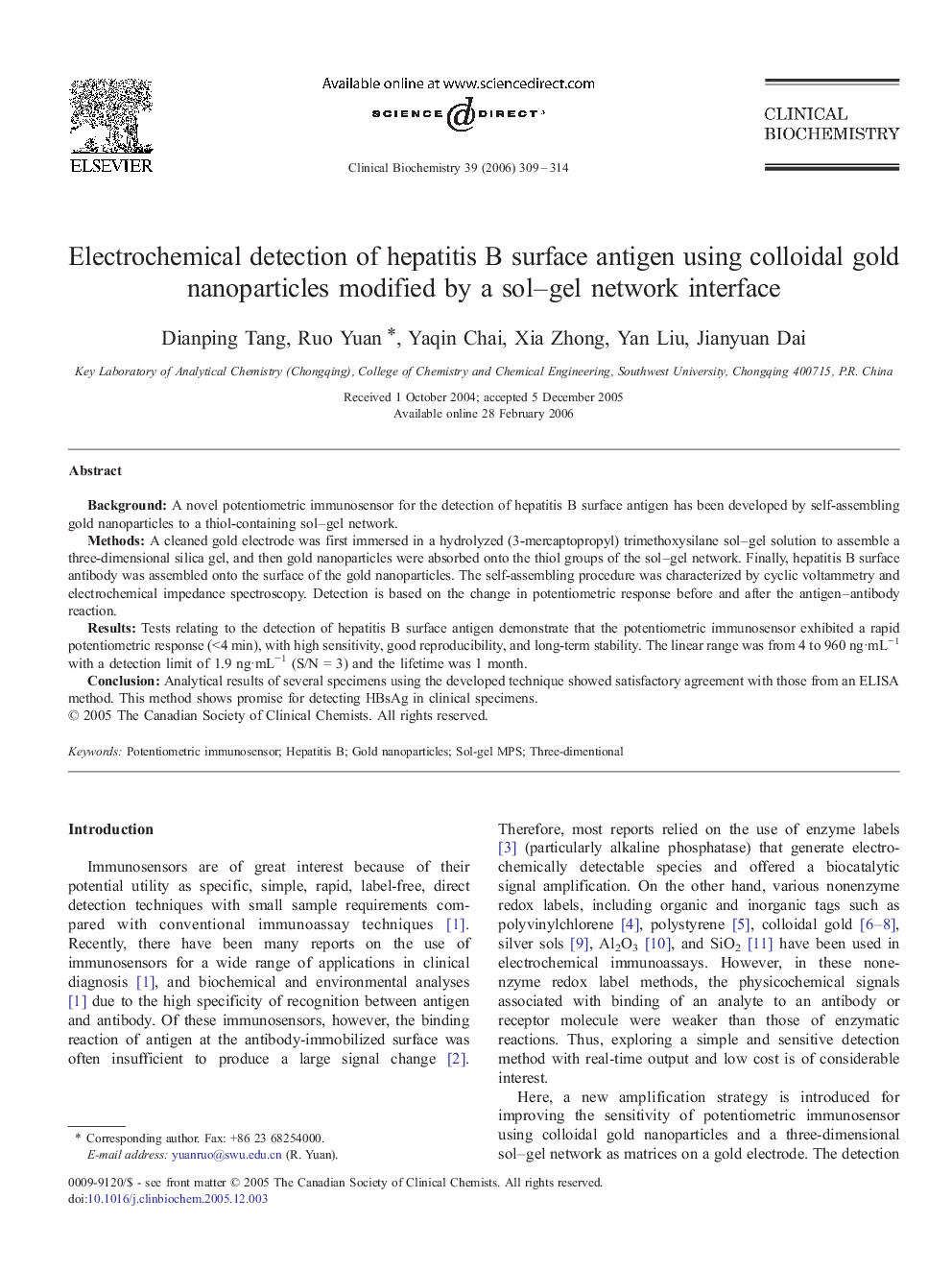| Article ID | Journal | Published Year | Pages | File Type |
|---|---|---|---|---|
| 1971762 | Clinical Biochemistry | 2006 | 6 Pages |
Background:A novel potentiometric immunosensor for the detection of hepatitis B surface antigen has been developed by self-assembling gold nanoparticles to a thiol-containing sol–gel network.Methods:A cleaned gold electrode was first immersed in a hydrolyzed (3-mercaptopropyl) trimethoxysilane sol–gel solution to assemble a three-dimensional silica gel, and then gold nanoparticles were absorbed onto the thiol groups of the sol–gel network. Finally, hepatitis B surface antibody was assembled onto the surface of the gold nanoparticles. The self-assembling procedure was characterized by cyclic voltammetry and electrochemical impedance spectroscopy. Detection is based on the change in potentiometric response before and after the antigen–antibody reaction.Results:Tests relating to the detection of hepatitis B surface antigen demonstrate that the potentiometric immunosensor exhibited a rapid potentiometric response (<4 min), with high sensitivity, good reproducibility, and long-term stability. The linear range was from 4 to 960 ng·mL−1 with a detection limit of 1.9 ng·mL−1 (S/N = 3) and the lifetime was 1 month.Conclusion:Analytical results of several specimens using the developed technique showed satisfactory agreement with those from an ELISA method. This method shows promise for detecting HBsAg in clinical specimens.
